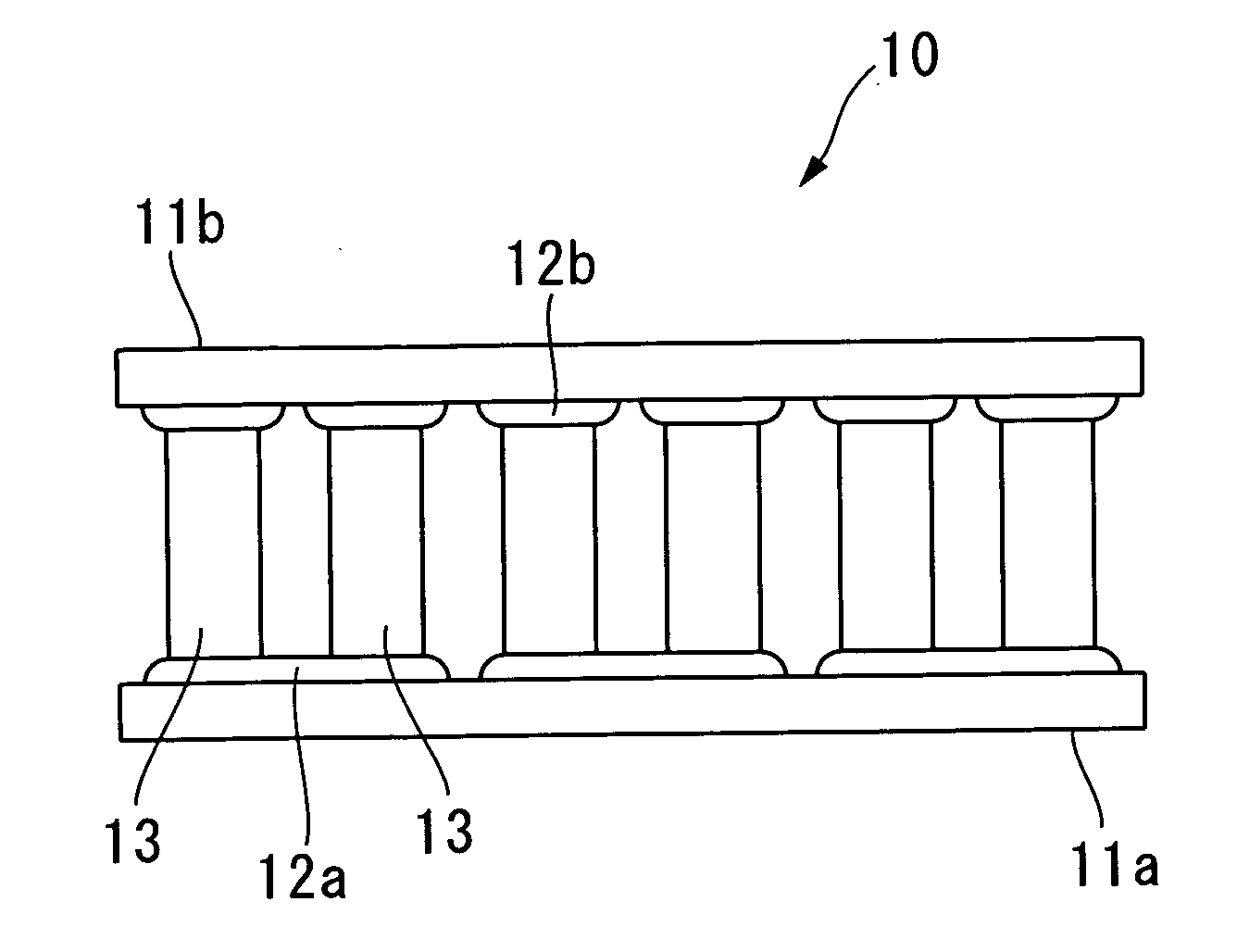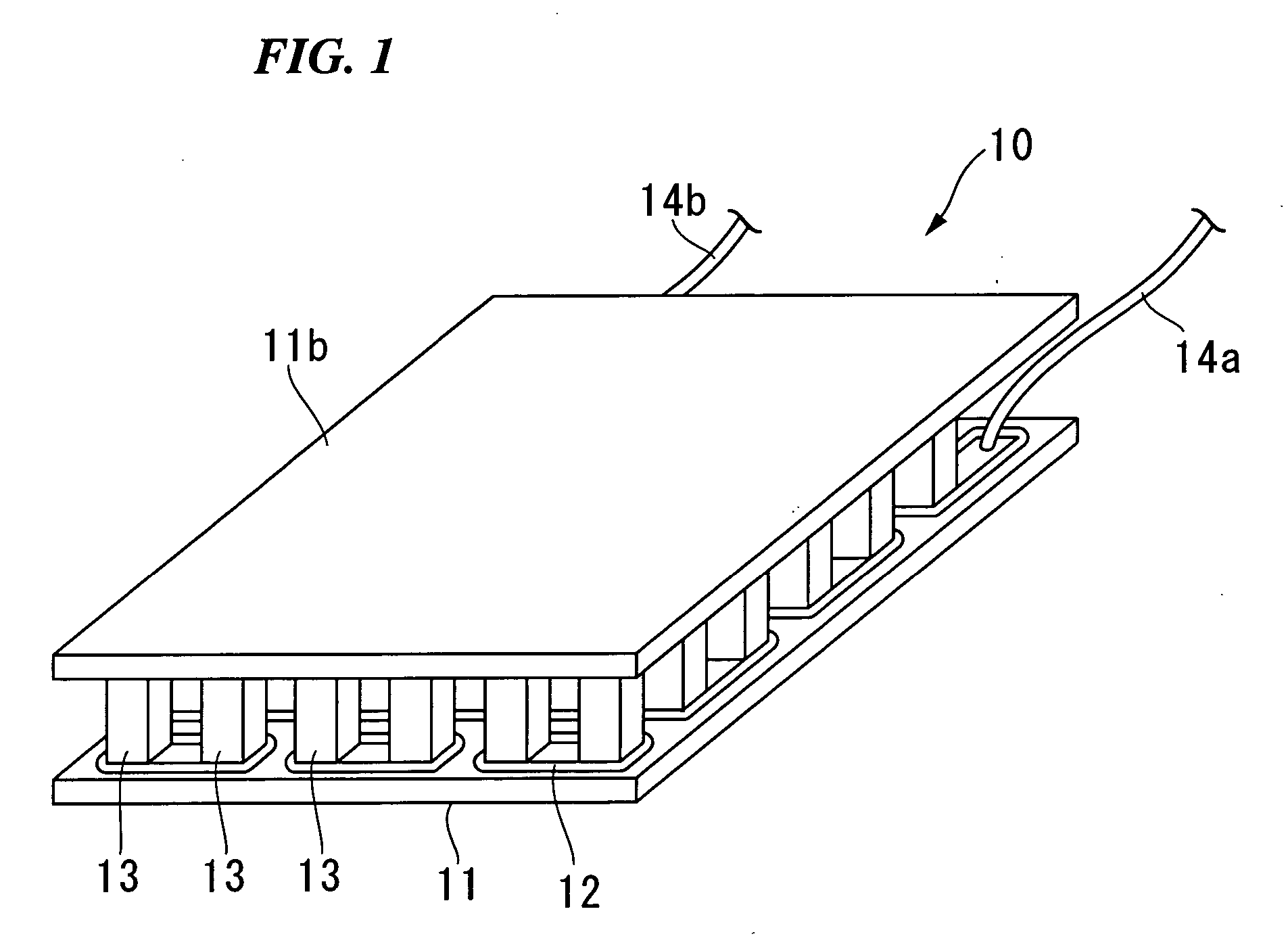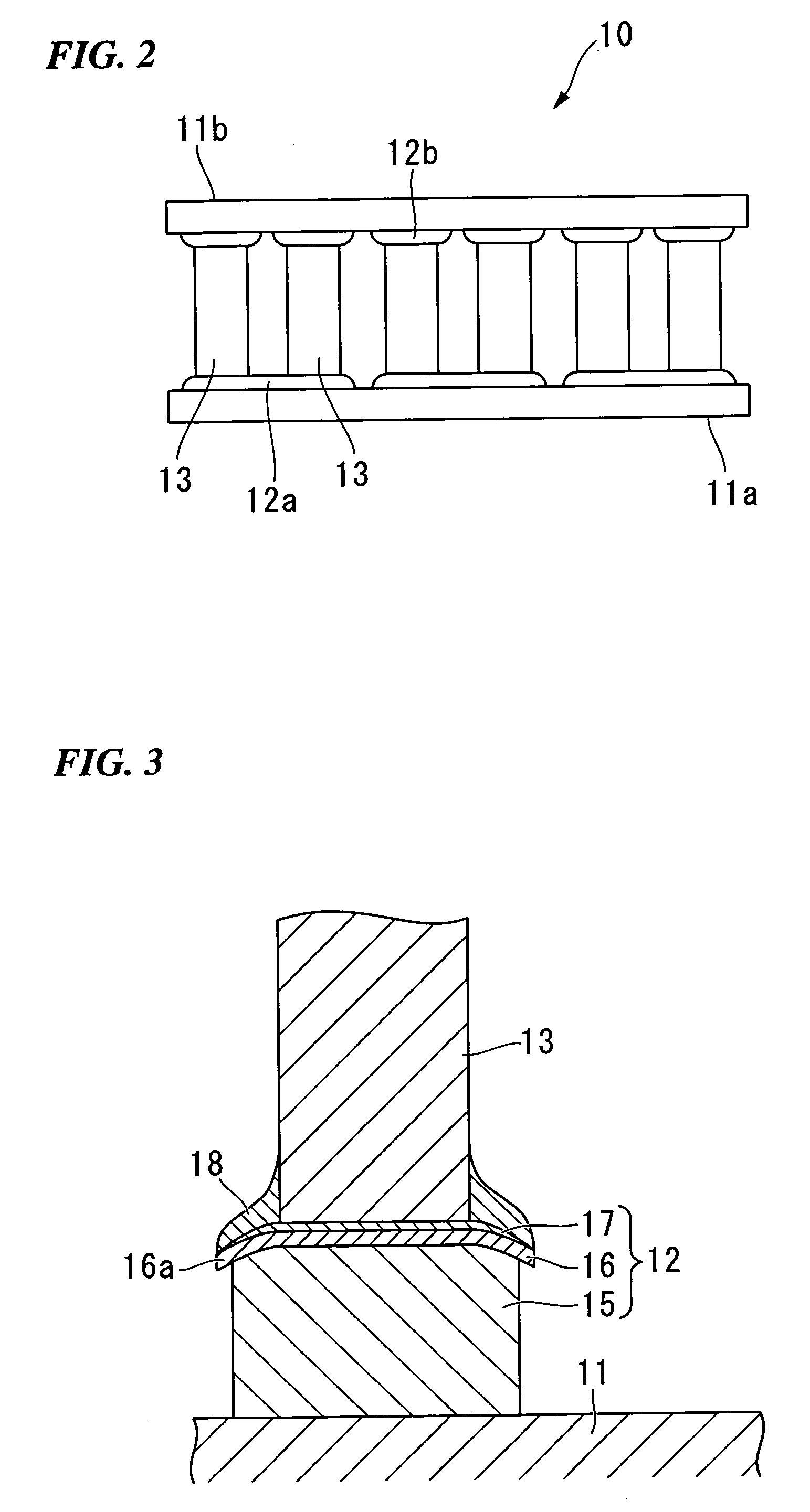Thermoelectric module and manufacturing method for same
a technology of thermoelectric modules and manufacturing methods, applied in the field of thermoelectric modules, can solve the problems of shortened manufacturing times, increased number of processes, and reduced production yields
- Summary
- Abstract
- Description
- Claims
- Application Information
AI Technical Summary
Benefits of technology
Problems solved by technology
Method used
Image
Examples
Embodiment Construction
[0035] Hereinafter, embodiments of the present invention are explained referring to the drawings. FIG. 1 and FIG. 2 show a thermoelectric module 10 of one embodiment. This thermoelectric module 10 has a pair of insulating substrates, which are a lower substrate 11a and an upper substrate 11b; lower electrodes 12a are formed in prescribed positions of the upper surface of the lower substrate 11a, and upper electrodes 12b are formed in prescribed positions of the lower surface of the upper substrate 11b. The lower-end faces of multiple thermoelectric elements 13, consisting of chips, are fixed in place to the lower electrodes 12a by solder; and, the upper-end faces are fixed with solder to the upper electrodes 12b respectively, to integrally link the lower substrate 11a and the upper substrate 11b.
[0036] The lower electrodes 12a and upper electrodes 12b are installed at positions shifted distances equal to substantially the width of one of the thermoelectric elements 13. Upper electr...
PUM
| Property | Measurement | Unit |
|---|---|---|
| Length | aaaaa | aaaaa |
| Thermoelectricity | aaaaa | aaaaa |
Abstract
Description
Claims
Application Information
 Login to View More
Login to View More - R&D
- Intellectual Property
- Life Sciences
- Materials
- Tech Scout
- Unparalleled Data Quality
- Higher Quality Content
- 60% Fewer Hallucinations
Browse by: Latest US Patents, China's latest patents, Technical Efficacy Thesaurus, Application Domain, Technology Topic, Popular Technical Reports.
© 2025 PatSnap. All rights reserved.Legal|Privacy policy|Modern Slavery Act Transparency Statement|Sitemap|About US| Contact US: help@patsnap.com



